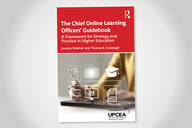You have /5 articles left.
Sign up for a free account or log in.
If you take a cruise the main thing you will notice is the sheer number of people that the ship employs.
The Norwegian Jewel sails with about 1,100 crew members - serving about 2,400 passengers. What is striking is that almost none of these employees are from the U.S. The vast majority of the crew, the people who cook and serve the food and clean the rooms and maintain the ship are from emerging economies. Over 60 countries are represented in the Jewel staff, with the majority from Southeast Asia.
Since the Jewel is flagged in the Bahamas NCL is not required to pay minimum wage or abide by U.S. labor standards. Working on a cruise line involves very long hours and very few days off during a typical 10 month contract. These jobs, however, are highly sought after - as cruise employees have very low living expenses (food and lodging provided) and can send most of their paycheck home.
Higher ed, like cruising, is a labor intensive business. However, unlike the cruise industry, our labor is extremely costly. All the people cruise lines hire do not add up to a particularly burdensome expense.
Cruise lines spend more on fuel (just under 20%) than they do on personnel. Many cruise employees have low base salaries and gain the majority of their compensation by tips. A wage that would seem low for a U.S. worker represents a good living for someone from Vietnam, Cambodia, the Philippines or Myanmar.
The result is that the real cost for cruising has remained stable or declined over the years. The cruise industry is profoundly "unproductive", in that it does not try to replace labor with capital. An army of cooks, waiters, cleaners, and maintenance people remains an inexpensive way to provide service to its customers.
I've been struggling to draw some lessons from an industry not suffering from the cost disease to our industry?
How can a business that in some ways is so similar, an industry with high fixed costs built on in-person service, behave so differently from our own?
Can any of you draw some insights or lessons from the cruise industry for higher ed?




